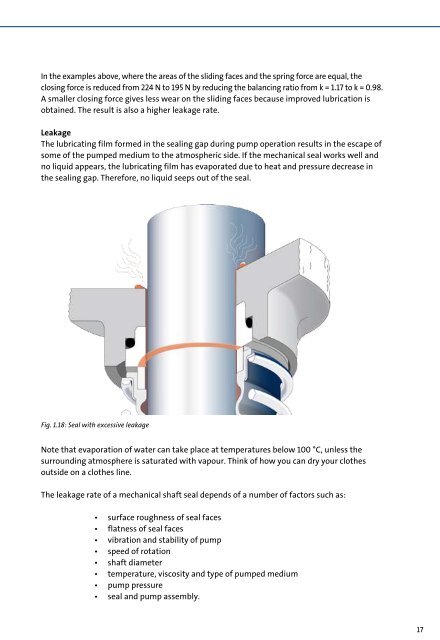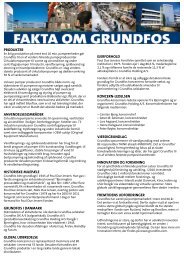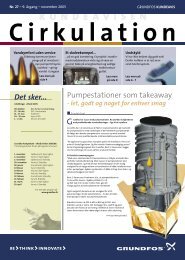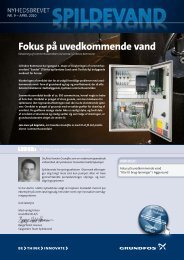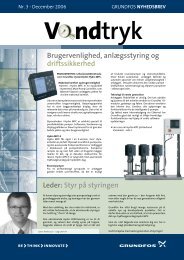Mechanical shaft seals for pumps - Grundfos
Mechanical shaft seals for pumps - Grundfos
Mechanical shaft seals for pumps - Grundfos
Create successful ePaper yourself
Turn your PDF publications into a flip-book with our unique Google optimized e-Paper software.
In the examples above, where the areas of the sliding faces and the spring <strong>for</strong>ce are equal, the<br />
closing <strong>for</strong>ce is reduced from 224 N to 195 N by reducing the balancing ratio from k = 1.17 to k = 0.98.<br />
A smaller closing <strong>for</strong>ce gives less wear on the sliding faces because improved lubrication is<br />
obtained. The result is also a higher leakage rate.<br />
Leakage<br />
The lubricating film <strong>for</strong>med in the sealing gap during pump operation results in the escape of<br />
some of the pumped medium to the atmospheric side. If the mechanical seal works well and<br />
no liquid appears, the lubricating film has evaporated due to heat and pressure decrease in<br />
the sealing gap. There<strong>for</strong>e, no liquid seeps out of the seal.<br />
Fig. 1.18: Seal with excessive leakage<br />
Note that evaporation of water can take place at temperatures below 100 °C, unless the<br />
surrounding atmosphere is saturated with vapour. Think of how you can dry your clothes<br />
outside on a clothes line.<br />
The leakage rate of a mechanical <strong>shaft</strong> seal depends of a number of factors such as:<br />
• surface roughness of seal faces<br />
• flatness of seal faces<br />
• vibration and stability of pump<br />
• speed of rotation<br />
• <strong>shaft</strong> diameter<br />
• temperature, viscosity and type of pumped medium<br />
• pump pressure<br />
• seal and pump assembly.<br />
17


